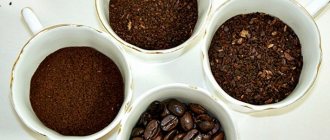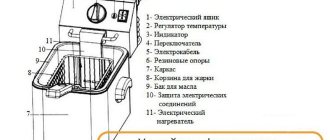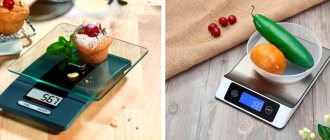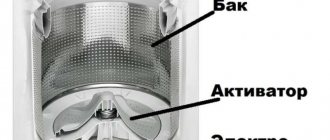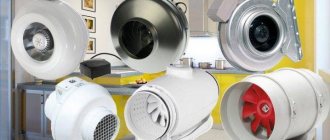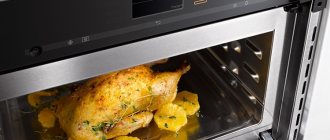What is a juicer
A juice cooker is a structure consisting of several containers, in each of which a certain working process takes place. The device is easy to disassemble and assemble and can be powered either by electricity or by gas heating. The device kit includes the following items:
- the lower pan with a small height is intended for water;
- juice collector - a high container with a hole made for supplying hot condensate to the upper tier;
- a tube for draining juice, equipped with a special valve that allows you to regulate the flow of liquid;
- steam basket - mesh for raw materials;
- cover with built-in safety valve;
- a hose with a clamp through which the finished juice flows.
When using a juicer, the yield of the drink reaches 80%.
The amount of the finished product is determined by the juiciness of the raw materials; most of it can be obtained from berries and fruits, less from vegetables.
Operating principle and instructions for use
Each juicer comes with instructions. But if you are just looking closely at it, it will not be superfluous to know in advance what this device is.
Juice cookers are made from stainless steel or aluminum . Aluminum is cheaper and heats up faster, but is more susceptible to damage. Made from stainless steel, they are more durable and have better heat transfer. But they also cost more. The juice cooker looks like a pressure cooker. At the very bottom there is a container into which water is poured. Then a container for collecting juice (juice collector). It is a pan with a tube in the middle. A container for raw materials (fruits, berries, vegetables) with holes is installed on top. A lid and a hose with a tap are included with the juicer.
The juice cooker is assembled in the same way as a pressure cooker . All elements are placed on top of each other. Water is poured into the lower container. A juice collector is placed on top of it. It is to this that the hose with the tap is screwed. Then a container for raw materials. It actually contains the raw materials from which you plan to make juice. Everything is covered with a lid on top. Place a saucepan or sterilized jar under the hose.
The operating principle of the juicer is simple. Water from the bottom turns into steam when heated. Passing through the juicer section, the steam enters the raw material compartment. There, vegetables, berries or fruits, under the influence of steam, begin to release juice, which, in turn, enters the juice collector through holes. And from there through the tube into a pan or jar. As they say, everything ingenious is simple.
In addition, this operating principle significantly saves energy, unlike a juicer, especially if you have a gas stove. After all, a juicer uses a lot of electricity. You can also see how the juicer works in the video by following the link. As you can see, it is very easy to use.
The main differences between a juicer and a juicer
The main difference between the two units is that the juicer is intended for preparing preparations for the winter, and the juicer is intended for obtaining a fresh drink; when choosing between them, the goal is taken into account.
At the same time, the product obtained in a juicer is significantly inferior in nutritional composition to juice squeezed out by a juicer, which does not heat the raw material during processing, and therefore does not destroy vitamins and nutrients. When using a juicer, ascorbic acid suffers to a greater extent, being almost completely destroyed under the influence of hot steam.
How to use an old juicer
How to use an old style juicer? Many people ask this question when the device remains, but the instructions have long been lost. But modern juice cookers are practically no different from their ancestors. The difference is usually only in appearance and quality of materials. Modern devices have an improved design and handles that do not heat up. This is where the differences end. Therefore, if you do not know how to use an old-style juicer, then pay attention to the new models or read the article to the end.
Juice cooker: principle of operation
The juicer operates according to the following principle:
- Water poured into the lower container boils under the influence of the heating element.
- The resulting hot condensate exits through the steam pipe and rises to the upper tier, contacting the raw materials on the grate.
- The steam softens the fruits and releases juice that flows through the grate to the hot bottom of the juice receiver.
- At a temperature of 60–70 °C, the drink is pasteurized.
- After accumulation in sufficient quantity, the finished product flows through the outlet tube into a container placed outside.)
Kinds
A juice cooker is a fairly simple kitchen appliance that has a small number of design variations.
There are 2 types of pressure cookers according to the type of food:
- Electrical . They have a built-in heating element.
- Traditional . For their operation, an external heating source is required: a gas or electric stove.
Juice cookers: 1-Electric 2-Traditional Expert opinion
Galina Valerievna Borodina
Some electric saucepans can be converted into a juice cooker by purchasing the appropriate attachment.
Juice cookers also differ in the material they are made of:
- Steel.
- Aluminum.
How to use a juicer correctly
When using a juicer, it is important to follow the step-by-step instructions:
- Prepare the raw materials: wash and peel, since the pulp should be directly exposed to steam.
- Place the fruits on a wire rack in the top tier. If you plan to make a sweet drink, sprinkle with sugar. When processing vegetables, sprinkle with salt.
- Pour approximately 2 liters of water into the lower pan.
- Place the juice receiver on top.
- Plug the device into an electrical outlet or place it on a gas stove.
- Cover the juicer with a lid.
- Insert a tube to drain the liquid into the side hole of the central container, and lead its other end into a container installed outside (previously sterilized).
It is advisable to slightly warm the glass container for collecting the finished juice before starting the work process, otherwise the glass may crack as a result of contact with hot juice.
What affects the cost
Many factors influence the price of a juicer and it’s worth taking a closer look at them!
The price of a juicer is influenced by the following factors:
- Material of execution (stainless steel is more expensive).
- Product volume.
- Availability of power supply.
- Additional functions: pressure valve, temperature sensor, O-ring on the lid, mini tap on the outlet.
- Brand.
Products in the cheap price category are represented by domestic ones (Kamensk-Uralsk), (Belaya Kalitva), Kamyshlovsky metalworking plant (Kamyshlov). These juice cookers are made of food-grade aluminum and rubber (outlet hose). Depending on the volume, their cost ranges from 1-2 thousand rubles.
Expert opinion
Borodina Galina Valerievna
More expensive juice cookers are sold not only under domestic, but also under foreign brands. Among them: “Great Rivers”, “Gipfel”, “Bekker”, “Webber” and others. The cost of such equipment starts from 2 thousand rubles. and can reach up to 6 thousand rubles.
Aluminum juice cooker - how to use
The juice cooker is a kind of tower consisting of three pans stacked on top of each other. Despite the variety of models, they are all built on the same principle and differ only in size, material and design. Juice cookers made of aluminum are characterized by reasonable cost and ability to heat up quickly.
What does a juicer consist of?
The device consists of the following elements:
- The base is a small bowl designed for boiling and evaporating liquid, and is located at the bottom of the structure.
- A juice collector is a container made in the form of a cylinder with a side hole and a steam tube built into the inside. Its main task is to collect the flowing juice.
- The grate for raw materials is a kind of colander placed above the juice collector. Vegetables and fruits prepared for processing are laid out on it. Some models are equipped with additional grates, which makes it possible to cook food in a juicer, that is, use it as a steamer
- Lid – necessary to seal the working space and condense evaporating steam. Typically, this element is equipped with a small air hole to prevent bouncing.
- An outlet tube with a clamp is built into the side opening of the structure. With its help, the finished juice drains.
Juice cookers come in two types: electric and mechanical, such as aluminum models.
Principle of operation
Regardless of the method (gas or electricity), the operating principle of the juicer is based on the use of steam. Namely:
- After being plugged in or set on fire, the water poured into the lower bowl (base) gradually boils.
- Through a tube passing through the entire device, the resulting condensate enters its upper part.
- The raw material at the top becomes soft under the influence of hot steam and releases juice.
- The nectar flows through the grate into a juice collector located in the middle, where it is pasteurized at a temperature of about 70 °C.
- After the juice has accumulated in sufficient quantities, it exits through the outlet pipe and enters the substituted container.
It is not recommended to install a juice cooker made of aluminum on an induction hob, as it can damage the structure.
How to use an old juicer - instructions for use
The operating principle of the new and old model juice cookers is absolutely the same, since the difference between these models is only in the material of manufacture and design. Therefore, when using an aluminum structure produced in the USSR, you can safely follow the instructions for any new device. Juice is obtained using a juicer as follows:
- Prepare the raw materials: wash and peel to speed up the exposure of the pulp to hot condensate. Large fruits are cut into small pieces.
- Vegetables, berries or fruits are laid out on a wire rack. If desired, sprinkle them with sugar/salt.
- The base of the device is filled with water (about 2 liters), a juice receiver is installed on top, where the nectar will subsequently flow.
- The aluminum structure is installed on the stove and covered with a lid.
- A tube is inserted into the hole located on the side of the central reservoir to remove the juice. Its second end is placed in a glass container, previously sterilized.
Cover outer containers with sterile lids immediately after filling. The jars of juice are turned upside down and left in this position until they cool completely.
Before use, the glass container for juice is slightly heated, this prevents cracks on its walls when in contact with a hot drink.
Video
How to properly use old models of juice cookers is described in detail in the following video.
Tomato juice
The steps for preparing tomato juice are the same as for preparing apple juice. It is necessary to wash and cut ripe tomatoes. Place them in a container for raw materials. Pour water into the lower bowl. Assemble the entire structure and place it on the stove to heat. After about 40 minutes, when there is some waste left in the upper bowl, open the clamp tap, and through a sieve, which will collect all the pulp that has fallen into the juice, strain directly into jars. Roll up as usual.
As you can see, using a juicer is very convenient. And most importantly, you can stock up on vitamins for the whole winter!
how to use a juicer
How to use
Instructions for use are included with the juice cookers; the step-by-step principle of assembling the device is clearly depicted. Plant materials are placed in the upper container. It is installed last, when the water boils. The raw materials are pre-washed, fruits are chopped, vegetables are cut into small pieces. Berries, stone fruits, and small tomatoes are placed whole.
Pour the finished drink into clean containers after an hour and a half, depending on the speed of brewing the drink.
How to use a juicer correctly:
- Assemble the device in the specified sequence;
- Do not allow the water to boil; if necessary, add water through the top hole;
- The outlet tube of the juice collector must be clamped. Place a clean container under the outlet pipe. Some juicers prefer the open harvesting method. This juice is not stored for a long time; it is consumed within 3–4 days;
- Pour the finished drink into clean containers after an hour and a half, depending on the speed of brewing the drink. The juice is corked and stored.
How it works
You can brew a drink in a juice cooker on any hob. It is prepared by steaming plant materials, the loading container is at the top. The juice is collected by gravity in a medium container. The plant material is heated to 60–70 °C, softens, settles under its own weight, and the escaping juice accumulates in the storage tank.
You can brew a drink in a juice cooker on any hob.
Soft debris is retained by mesh or perforated metal. Waste from the juicer is not thrown away; confitures and marmalade are made from fruits and berries; caviar is made from vegetables. For steam generation, ordinary water is used. It is poured into the lower pan and placed on the burner.
The juicer produces not juice in the generally accepted sense of the word, but a less concentrated drink - an extract that does not require sterilization, with a high content of useful substances.
How to prepare juice
Making the drink is easy. First the water is heated. At the same time, vegetable raw materials are prepared. As soon as steam appears, assemble the pressure cooker: place a juice collector with an outlet pipe on the steam generator, and place a container with vegetables or fruits on it. All you have to do is wait for the plant components to steam well. After 40–60 minutes, the condition of the plant material is checked and it is stirred to release more juice.
If desired, the juice is bottled.
You need to pour it into containers using a tube. If desired, the juice is bottled. Almost no pulp gets into the drink. The resulting juice does not need to be filtered; the suspension does not spoil the appearance of the drink. It turns out something between freshly squeezed juice and compote. Vegetable juices from a juicer are similar to store-bought packaged ones.
